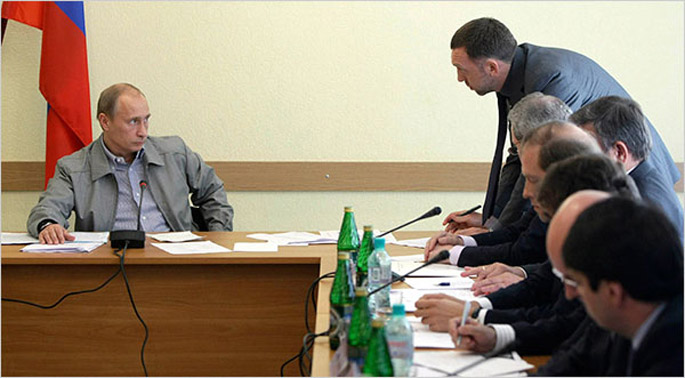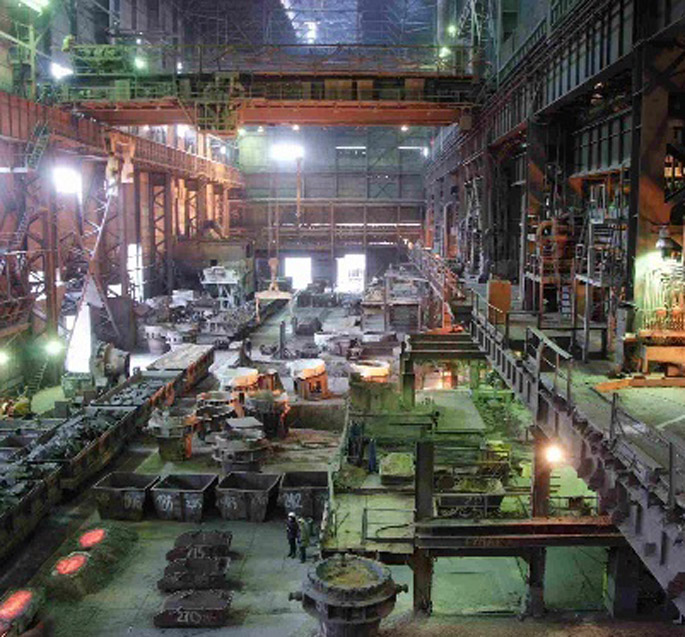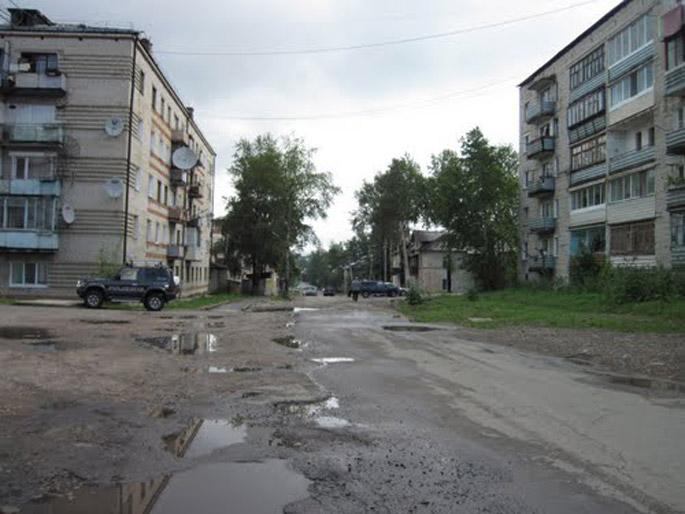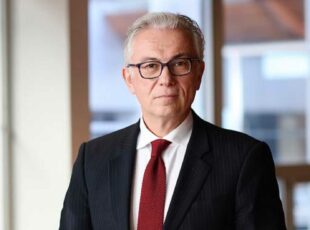One-horse towns
Despite all the declarations of the authorities about addressing the problem of single-industry towns, the situation continues to deteriorate.

Sergey Orlov
In May, RBC journalists were able to familiarise themselves with a confidential report on single-industry towns that was prepared for the Duma and the Kremlin by the Analytical Centre of the Government, and the Federal Protective Service (FSO). There is nothing consoling in the report: demand for the products of the country’s single-industry towns is declining, production volumes are dwindling, their foreign currency debts are crushing, and their warehouses are overflowing. As a consequence, a further 16,000 people may soon lose their jobs. The total number of officially unemployed persons in single-industry towns as of 1 May 2016 numbered 139,300, and another 106,200 workers were working part-time.
The FSO, a powerful special service whose primary function is to physically protect the authorities, is not for the first time turning its attention to such towns. A lot of noise was caused last February when the same RBC published a confidential sociological poll, which established that 17.4% of residents consider the socio-economic situation in their single-industry towns to be intolerable, and for 42.4% it was “difficult to tolerate.”
It is worth noting how these “plain-clothes analysts” formulate their questionnaires: the main thing that interests them is how much more patience the residents of these towns still have. That is, the leitmotif of all these FSO studies is purely functional and transparent: to determine if these depressed areas might accidentally or deliberately create problems for the authorities. Judging by the latest figures, they might – and how.
The scale of the problem
In Russia, single-industry towns are those conurbations where 25% of the employed work at the town’s core industry, which provides no less than 50% of local industrial production. There are 319 towns with this profile in Russia, where approximately 15 million people – or 10% of the country’s total population – live. The socio-economic situation in ninety-nine areas is assessed as “complicated” by the Foundation for the Development of Single-Industry Towns (FRM).

The problem of single-industry towns became a talking point across the country during the last crisis. Then, in 2009, in Pikalyovo (a single-industry town in the Leningrad region) three factories were closed at once, and those people left without means to survive set off to block the federal highway. Only the arrival of Vladimir Putin was able to resolve the sharp conflict between employees, the local authorities and businesses. Putin, in front of the cameras, having chastened the oligarch Deripaska, established himself even more in the role as the people’s sole protector. However, Putin has still not forgotten the grim experience of Pikalyovo: if single-industry towns were to get together – united by shared problems –they might take to the streets, and in the final analysis, shake his personal authority.
In this present crisis all these “Pikalyovo triggers” are in place as before, and exactly as before they are frightening the Kremlin. “If a plant in some single-industry town stops paying wages there might be an explosion, the authorities will come under stress if there turns out to be a lot of such problematic places or if there are new, real deteriorations in the economy,” commented Lyudmila Presnakova, the Projects Director of the “Public Opinion” Foundation in the spring of 2016.
In this present crisis all these “Pikalyovo triggers” are in place as before
By 2013, when the crisis of 2008-2010 had long passed, the government was seized by the idea of relocating people from the disadvantaged single-industry towns to other regions of Russia. So people would be more likely to want to move, they even thought of offering money: the largest relocation payment (over $12,000) was supposed to pay for moving to the Far East. However, this Ministry of Labour initiative in the end stalled, and now it is preferred not even to remember it. “Taking into account the extremely low mobility of the population, the Foundation for the Development of Single-Industry Towns in its work is not examining a way to manage the squeeze [of a town due to the partial transfer of its population],” now says Ilya Krivogov, head of the Foundation.

Other concepts have won out. Firstly, the ineffectiveness of production, as previously, is not considered unconditional grounds to reform a single-industry town. The main thing is social stability, which, in fact, became another tax on private owners of core enterprises; and for state managers it turned into perhaps their major function. Social stability is the only product that a Russian single-industry town cannot afford to produce badly or intermittently. “The state often simply foisted onto us problematic assets so that we would rescue them,” says a high-ranking representative of the Russian military-industrial industry. For example, they returned the Yurga Engineering Plant [at the end of 2013] to the state-run Uralvagonzavod (UVZ). Yes, it was a very serious enterprise at one time. However, for more than twenty years it had not engaged in military production. There are some ruins there, passing from hand to hand. But Yurga is a single-industry town – the plant must be boosted. Nobody worries about how this is to be done, let UVZ’s management think about it.”
Social stability is the only product that a Russian single-industry town cannot afford to produce badly or intermittently
So management duly came up with something: On 1 June in the Ural’s single-industry town of Nizhny Tagil (pop. over 350,000), due to a lack of capacity, the Uralvagonzavod corporation sent more than 3,000 of its employees on a mandatory month’s leave. News on Nizhny Tagil’s Internet portal about the next mandatory leave was met with consternation: “They screwed up an order to Iran – there are too many spongers for one car. They write about a summer slowdown, it’s nonsense, we haven’t worked a single month normally for the last year and a half, we’re doing even less than in 2015.”
Talk about reform
However, Russian authorities have nevertheless begun to understand that in a time of crisis they have no choice but to address the problems in the single-industry towns, hence the idea for setting up industrial parks in these areas. According to the organisers, tax incentives will attract future residents, and they will provide new working opportunities for towns in a depression. Nevertheless, even here, Russian specifics cannot be avoided.

For example, in April 2014 at a meeting involving Putin it was stated that Yurga (Kemerovo Region) and Chegdomyn (Khabarovsk Krai) are among the “most crisis-ridden single-industry towns” and “are in such a state, that they should have been helped yesterday.” Putin readily believed the government’s experts who were claiming that the employment situation would be remedied by the construction of industrial parks, and that “it’s the quickest and most effective measure.” However, in May 2016, i.e., over two years after this historic meeting, all the news about an industrial park, for example, in Chegdomyn, is still only mentioned in the future tense: “One of the key issues is providing this site with transport, energy and a utility infrastructure. It is anticipated that funds for this will come from the provincial budget and from the Foundation for the Development of Single-Industry Towns. The region’s authorities are sending an application for co-financing to the FRM before July. The amount of support is estimated at 500 million roubles.”
In a time of crisis it is impossible to solve the problem
But according to Professor Aleksei Novikov of the Graduate School of Urban Studies, it is already too late to save the towns already in crisis: “The problem with single-industry towns, or more precisely, how it is solved, is that it only begins to be solved when a crisis approaches, and when the federal government understands that these are socially dangerous points. Unemployment there will rise, and so on. But in a time of crisis it is impossible to solve the problem. It can only be solved over a very long period of time.”
So far in Yurga, more than two years later, only the sewer has almost been installed; as the official statement says: “In Yurga, as the deputy head of the town’s construction department said, the sewer for industrial waste is already 80% built. By September it will be finished. It is planned to invest no less than 4 billion roubles and create 2,500 jobs in Yurga by 2020.”
In 2014, the name of the village of Nadvoitsy (Karelia) was also aired at a Putin meeting, and everyone was also prepared to subject this territory to something urgent and resuscitative. In the end, two years after all Putin’s green lights, a report about the situation in the village begins with the inevitable sad findings: “In Karelia they are again searching for a contractor to build the utilities infrastructure facilities for the industrial park in the village of Nadvoitsy in the Segezhsky region.” That is, not only has no science park begun to be constructed, but even the utilities infrastructure to the site has not been laid.
For comparison: in China in 2014, 58 new skyscrapers were built; in 2015 they erected there a 57-storey skyscraper in 19 days; and in May 2016 it was publicised that Chinese builders in just 3 years and for $700 billion will build 300 transport infrastructure facilities for remote areas of the country.
Breaking point
Thus, it remains for Nadvoitsy residents only to rejoice that the local aluminium plant at the beginning of 2016, after a two year hiatus, resumed its production of alloys. The plant was saved by command economy methods: Putin did not allow the much-suffering Oleg Deripaska to close the town’s core enterprise. Judging by everything, the authorities were simply frightened again. “If people reach their breaking point and set off to block a road, this will already seem nonsense,” said Marina Guseva, the head of Nadvoitsy to a correspondent from the capital’s Kommersant newspaper in January 2014. “We also have a criminal contingent, which has just appeared, they have nothing to lose. It costs them nothing to take up a gun or a knife, especially if the wave is already in motion. And it’ll start here, like it did in Egypt.”
We look at you, Muscovites, you have all possibilities for a life, but are we not citizens too?
One of the factory workers Denis Vilkov agrees in principle with the head of the municipality: “We look at you, Muscovites, you have all possibilities for a life, but are we not citizens too? I have a friend who doesn’t know if in a month he’ll be able to buy bread for his children. That’s why there’s real force building here. We are ordinary working lads. We’ll come together like a fist if it’s necessary to give the state a kick up the arse, we’ll kick its arse using legal methods.”
The greater part of Russia and its single-industry towns are suffering, in essence, from the same illnesses: a lack of competition, a shortage of investors, low productivity, poor economic diversification, errors and abuses by civil servants … Many of Russia’s troubles exist in single-industry towns in a more complex form: for example, industrial production falls more rapidly there than in the economy as a whole, whereas unemployment, on the contrary, grows almost twice as fast as the national average.
The development of Russia’s one-horse towns is impossible without the harmonious cooperation of businesses, local authorities and residents, but in today’s Russia, where businesses cannot rely on judicial protection, and officials have a taste for corrupt income, while people are accustomed to relying only on themselves and Putin, the role of chief peacemaker has fallen to the FSO. Social stability is achieved using these messages: “OWNER, do not skimp on social welfare, Big Brother is watching you! OFFICIAL, do not bury yourself, the special services see and hear everything, and they can always make the buck stop with you! CITIZEN, do not think about protesting – be frightened off once and for all!”



